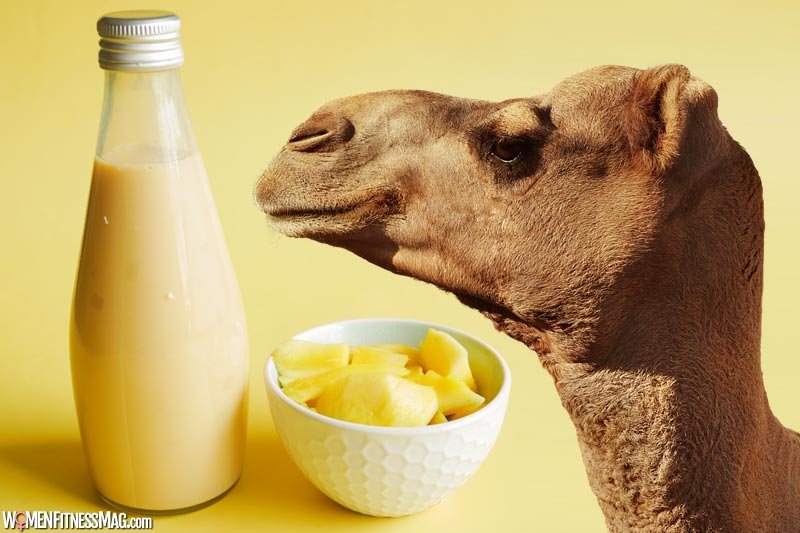Benefits of Camel Milk : Milk is a pivotal nutritional liquid food, and many people are habitual of consuming it daily in any form. However, they might be aware of only milk-based products that originated from animals like Buffaloes, Cows, Sheep, and Goats. Whereas there is one other milk that has been consumed for centuries by the nomadic cultures.
We are talking about camel milk which has remained a great food for the wandering people in harsh deserts. With the passage of time, this milk is gaining popularity all around the world. It’s now produced commercially and exported to other countries.
Nutritional Value of Camel Milk
It has already been proved that Camel milk has a richness of energy, protein, vitamin B12, calcium, riboflavin, pantothenic acid, and many other crucial nutrients. Milk from camels has been the basic source of animal milk in the Middle Eastern, North African, and Asian cultures for years. Ensuring the survival of baby camels in the harsh hot weather of deserts, this milk is a source of higher nutrients like calcium, thiamine, niacin, iron, potassium, copper, and manganese. Besides this, it possesses vitamin C three times greater than cow milk. In other words, this can rightly be called a superfood thanks to various camel health milk benefits. In terms of figures, one-half cup(120ml) of camel milk contains: Calories: 50
- Protein: 3 grams
- Fat: 3 grams
- Carbs: 5 grams
- Thiamine: 29% of the Daily Value (DV)
- Riboflavin: 8% of the DV
- Calcium: 16% of the DV
- Potassium: 6% of the DV
- Phosphorus: 6% of the DV
- Vitamin C: 5% of the DV
Is it Safe for People With Milk Allergies?
Yes, it is! The reason behind the allergic contents in cow milk is two proteins called beta-lactoglobulin or A1 casein. Milk originating from camels doesn’t contain these substances. Thus, people allergic to cow milk can consume this milk. Apart from that, individuals who can not abide lactose can safely enjoy this milk. In fact, it can be used for the treatment of various problems like autism, diabetes, and skin diseases and to improve the immune system of the human body.
Difference Between Cow, Buffalo & Camel Originated Milk
| Cow | Buffalo | Camel | |
| Protein | 3.29% | 4% | 2.2-5% |
| Lactose | 4.7% | 4.8% | 4.8% |
| Fat | 1-3% | 7-8 % | 3-5% |
| Health | An incredible source of calcium and vitamin D. | Low in cholesterol and an amazing source of nutrients such as vitamins, minerals, and calcium. | This is diabetic-friendly and helps in converting blood sugar into energy. It supports healthy insulin processes and normal insulin levels. Promotes overall good health and cardiac health as well as boosting metabolism. |
| Fat characteristics | Must be homogenized. Otherwise, the fat will increase, and huge fat molecules that will tend to aggregate. | Little molecules that do not aggregate like cow milk. Has lower levels of agglutinin than milk but with similar digestive power. | Fat molecules do not aggregate because they do not include enough agglutinin. The size of fat molecules is equivalent to that of cows. |
| Butter Cheese Making | It retains agglutinin; fat is easily detached, butter is produced by stirring, and cheese is made in rennet. | Conventionally used to produce mozzarella cheese. It excels in color and texture. Yogurt made from buffalo milk is thick and creamy. | It does not contain enough agglutinin to split the cream effectively. Butter is made using a centrifuge. Cheese made from camel milk is rennet. Easy to convert to yogurt. |
In conclusion, camel milk has the potential to treat various health-related problems. It comes with properties that boost the immunity system as well as heart health.
Related Videos about Benefits of Camel Milk :
Benefits of Camel Milk
camel milk benefits height growth, disadvantages of camel milk, benefits of camel milk for skin, camel milk benefits for females, camel milk benefits ayurveda, camel milk benefits for brain,




